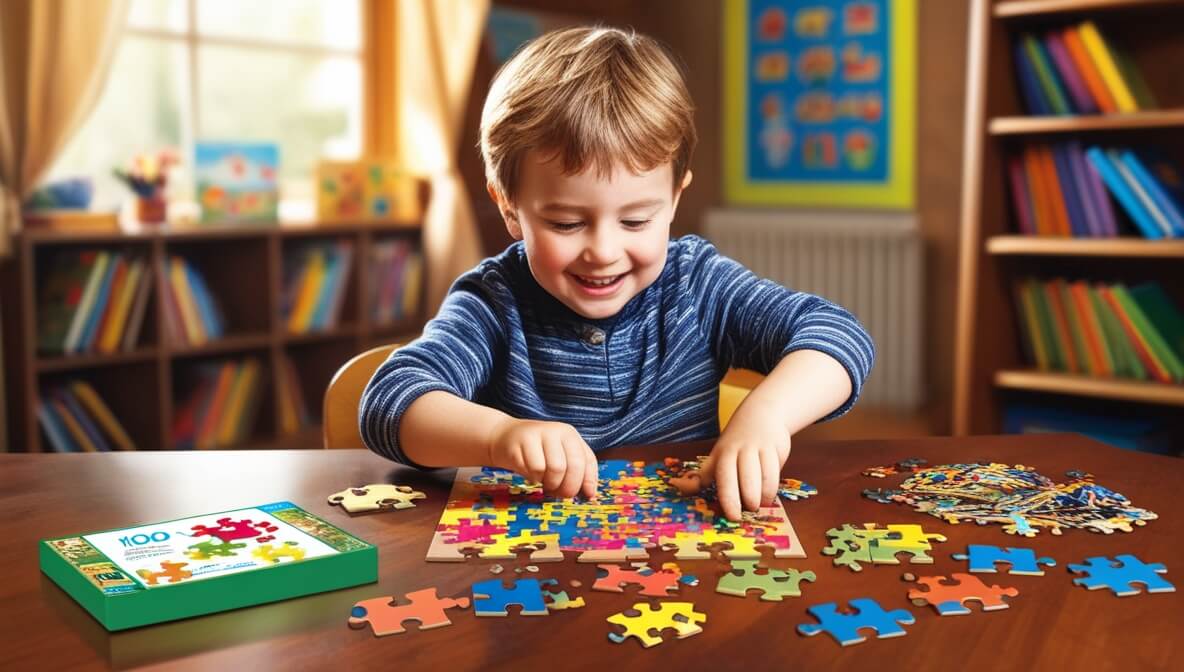
Selecting the appropriate level of puzzle difficulty based on a child’s age and interests is an important educational decision that ensures children gain the best learning outcomes while having fun. Here are some suggestions for choosing puzzle difficulty based on a child’s age and interests:
- Consider the child’s age:
- Ages 2-3: Opt for simple, large puzzles with 2-4 pieces, featuring simple patterns and bright colors.
- Ages 3-5: As children’s cognitive abilities improve, choose puzzles with 12-24 pieces, which can have slightly more complex patterns but still require clear color contrasts.
- Ages 5-7: Children can handle more complex puzzles, with 50-100 pieces or more, featuring more detailed images and a richer color palette.
- Ages 7 and up: Children can attempt advanced puzzles, such as those with over 100 pieces, or even 3D puzzles, with patterns that can be complex scenes or abstract art.
- Assess the child’s interests:
- Observe what themes interest the child, such as animals, space, superheroes, princesses, cars, etc., and choose puzzles with themes that match their interests.
- Pay attention to puzzle size and quality:
- Ensure the puzzle size is suitable for a child’s small hands and that the edges are smooth without sharp parts.
- Choose high-quality puzzles to ensure the pieces are not easily damaged and fit together tightly.
- Gradually increase difficulty:
- Gradually increase the difficulty of the puzzles as the child’s puzzle-solving skills improve, but ensure that the child does not become frustrated with a puzzle that is too difficult.
- Encourage children to challenge themselves:
- Let children try to choose puzzles for themselves, which can increase their sense of involvement and achievement.
- Provide appropriate guidance:
- Offer guidance when the child needs help, but do not complete it for them, allowing them to enjoy the process of solving problems.
- Observe the child’s response:
- Observe the child’s reaction during the puzzle-solving process; if they seem overly anxious or frustrated, a less difficult puzzle may be needed.
- Create an engaging puzzle experience:
- Make puzzle time a themed event or complete a large puzzle with family members to make it a family activity.
- Consider educational value:
- Choose puzzles that can teach children new knowledge or skills, such as puzzles with letters, numbers, or educational patterns.
- Personalize the selection:
- Every child is unique, and their abilities and interests may not completely match their actual age. Adjust the difficulty of the puzzles based on the child’s individual capabilities.
By following these suggestions, parents and educators can confidently choose the right puzzles for children, stimulating their interests and promoting their cognitive development.



